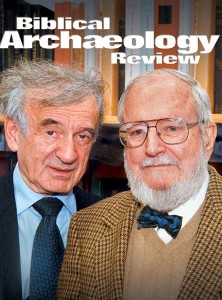Update: Finds or Fakes?
Editor’s Introduction
If genuine, the so-called Jehoash inscription would be of enormous significance. If a forgery, it is likewise of enormous significance, for it demonstrates the existence of an extremely sophisticated forgery conspiracy.
The Jehoash (Yehoash in Hebrew) inscription consists of 15 lines engraved on a 9 x 11-inch black stone plaque, memorializing contributions for repairs to Solomon’s Temple, then already more than a hundred years old. If authentic, it would be the first royal Israelite inscription ever discovered.
The especially startling aspect of the inscription is that it closely parallels the Biblical account of Jehoash’s repairs to the Temple in 2 Kings 12:5–17 and 2 Chronicles 24:4–14.
Jehoash/Yehoash, also known as Joash or Yoash, was the king of Judah from about 835 to 801 B.C. Actually, his name does not appear on the inscription. The first line has been damaged. Enough of his father’s name is left (Ahaziah; Ahazyahu in Hebrew), however, to clearly identify the son we know he fathered—Jehoash. The opening line in the inscription can therefore be reconstructed to include “[Jehoash son of A]haziah.”
Frank Moore Cross, America’s leading paleographer, early on declared that the Jehoash inscription “is demonstrably a forgery.”1
Already a library member? Log in here.
Institution user? Log in with your IP address.

